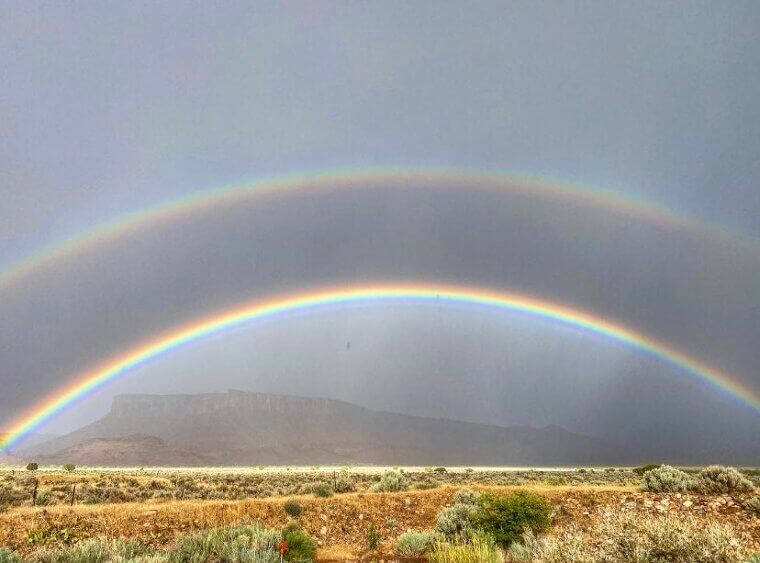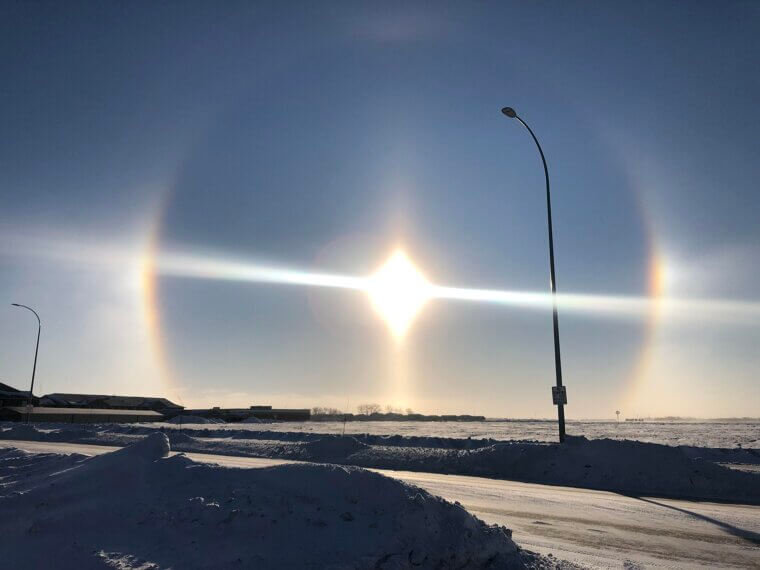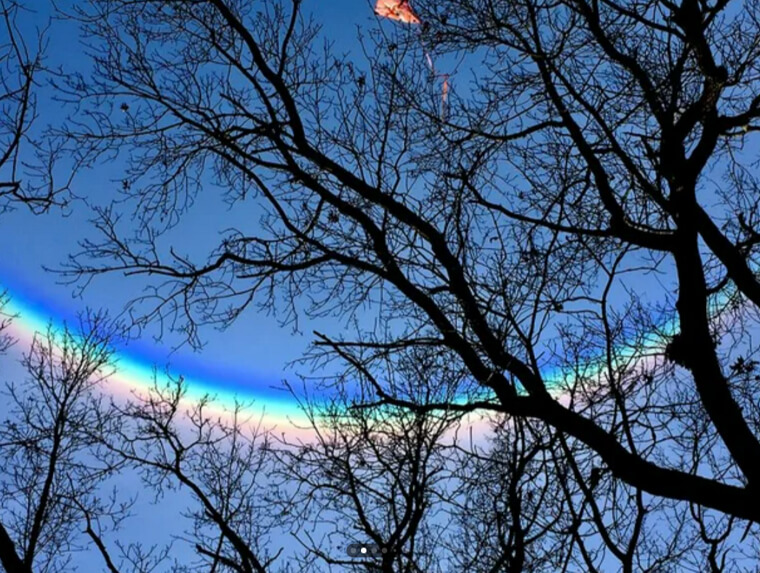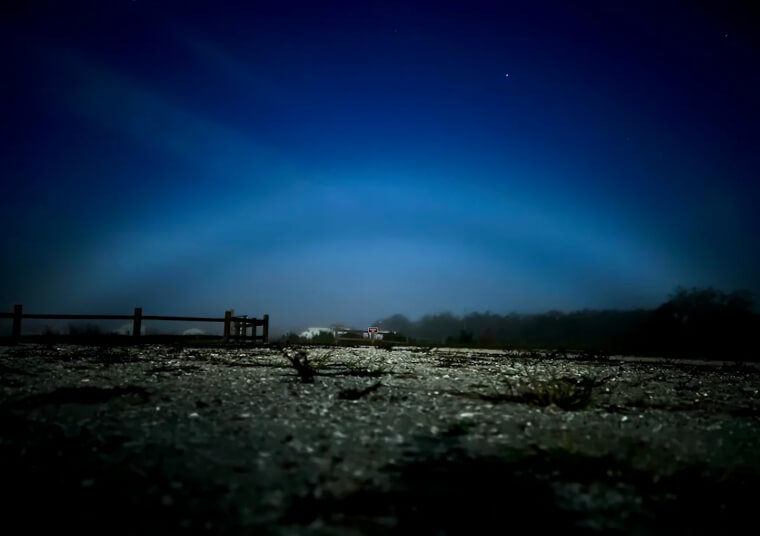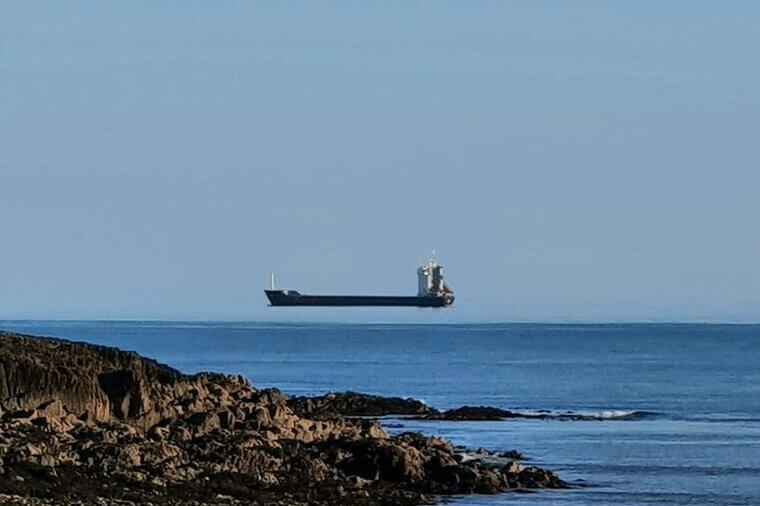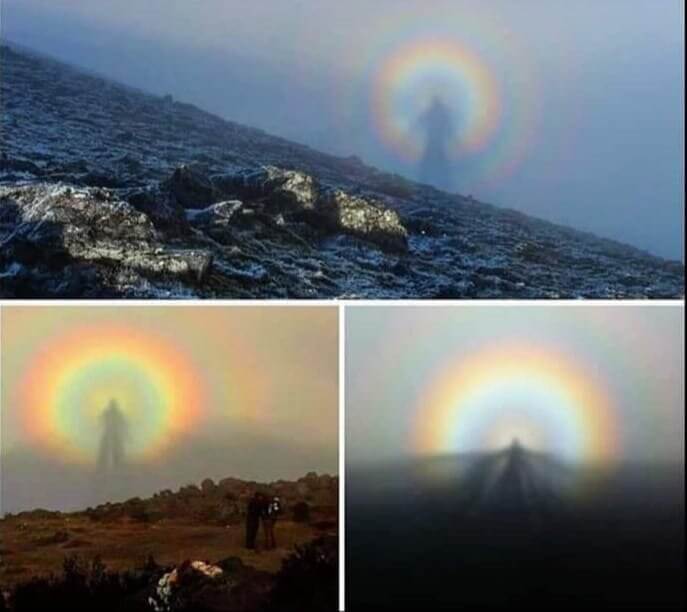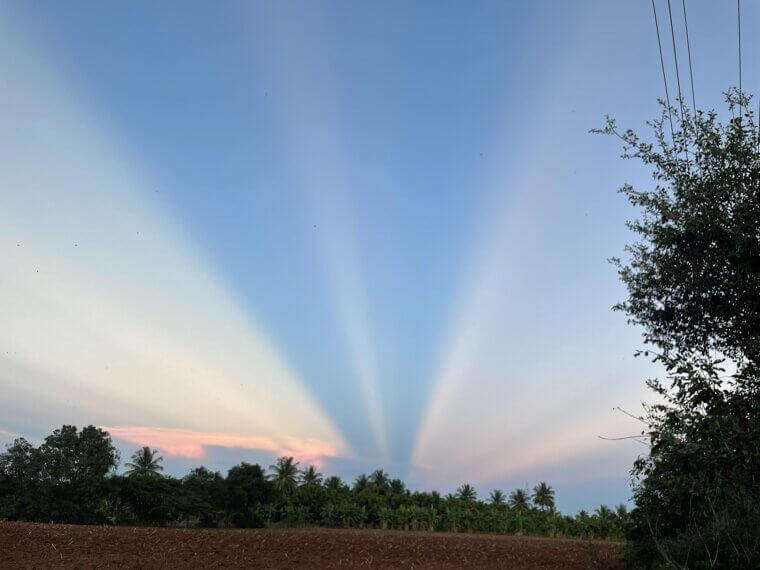Double Rainbow and Alexander’s Dark Band
A double rainbow is really one shower playing a two-part harmony. Expect a bright primary arc, a fainter partner with reversed colors, and a darker strip between called Alexander’s dark band. It appears anywhere raindrops meet the low Sun, especially late afternoon with the Sun at your back. Physics is simple refraction with one and two internal reflections; certain rays go missing, so the gap looks gloomy. Myths blame two storms. For photos, use a polarizer, expose for highlights, and frame a landmark to anchor the wonder. Wide views help.
Sun Dogs and the 22 Degree Halo
Sundogs ride beside a 22-degree halo, turning cold air into a crown. Look for a pale ring around the Sun with bright mock suns to the left and right. They appear in winter over cities, on high peaks, and across polar plains when thin cirrus drifts by. Plate and column ice crystals bend light at fixed angles, which paints the ring and companions. Ignore UFO talk. Use a wide lens, block the Sun with a post or glove, meter carefully, and protect eyes with proper filters. Cold days excel.
Circumzenithal and Circumhorizontal Arcs
Some days, the sky smiles back with circumzenithal and circumhorizontal arcs. One appears as an upside-down grin near the zenith, the other as a bright strip running parallel to the horizon. Both favor midlatitude summers when thin icy clouds float by. Well-oriented plate crystals act like tiny prisms; crystal tilt and the Sun’s height decide which arc shows. They are often called fire rainbows, yet nothing burns. Look away from the Sun, use a polarizer, add cloud texture, and enjoy geometry wearing party colors. Midday often works best.
Fogbow and Moonbow
Fogbows and moonbows are rainbows that whisper. A fogbow is a white arc born of tiny droplets on coasts, moors, or valleys, while moonbows glow faintly near waterfalls on clear full moon nights. Small droplets smear colors, and moonlight is just dim sunlight. No spirits required, only diffraction and patience. Stand with the Sun or Moon behind you and fog or spray in front of you. Use a tripod, opt for long exposures, and maintain a level horizon. At Victoria Falls and Cumberland Falls, guides schedule walks according to the lunar calendar for optimal angles and safety.
Fata Morgana and Superior Mirages
Fata Morgana and superior mirages turn horizons into stage sets. Ships seem to float, cities stack like bricks, and cliffs stretch into improbable castles. They favor polar seas, cold coasts, deserts, and big lakes after sharp temperature swings. A temperature inversion bends light downward, so distant objects loom, split, and layer like cinematic props. Phantom islands are usually cartographic ghosts, not new land. For viewing, seek calm days with long flat sightlines over air meeting different temperatures. Use a telephoto and shoot sequences as the mirage slowly morphs for you.
Brocken Spectre and Glory
A Brocken specter makes your shadow a giant, then crowns it with glory. Stand on a ridge with the sun behind you and a bank of cloud below, and your silhouette projects onto mist. Backscattered light from droplets forms concentric colored rings around the head’s shadow. Alpine legends blamed mountain spirits; optics says you brought the magic yourself. The morning after an upslope cloud forms is prime time. Use a wide lens, include the ridge for scale, and mind the drop-offs while celebrating this personal rainbow. Stay warm and patient.
Crepuscular and Anticrepuscular Rays
Crepuscular and anticrepuscular rays turn evening light into architecture. Sunbeams seem to fan from the Sun or converge on the opposite horizon, even though the beams are nearly parallel. Gaps in clouds slice the light, haze reveals the paths, and perspective does the rest. You can spot them anywhere late in the day when broken cloud decks hang around. Think of them as heavenly spotlights without the theology, just geometry and timing. For photos, compose with leading lines, underexpose slightly, and let silhouettes sharpen the glowing lanes across land and water.

